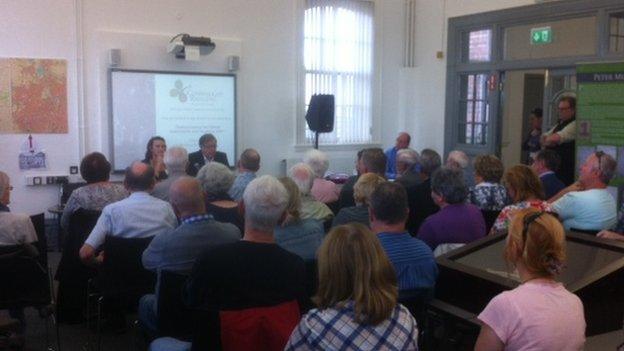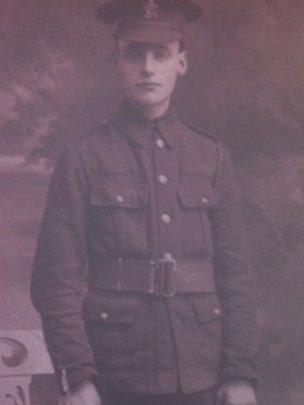World War One: Legacy of Connaught Rangers remembered
- Published

The hidden story of Belfast nationalists who signed up to fight in the First World War with the Connaught Rangers is reaching new audiences
The part played by Irish nationalists from Belfast in the Connaught Rangers during World War One has been marked by a special exhibition.
A collection of photographs, letters and memorabilia has been put on display at the Falls Road library in west Belfast.
Once, such an exhibition would have raised eyebrows but now the display, called The Legacy of Belfast Nationalists and the Great War, has been put on as part of the West Belfast festival, Féile an Phobail.
The collection has been put together by volunteers from the 6th Connaught Rangers research group who aim to record the role Belfast men played in the regiment.
Difficult
More than 1,000 men from nationalist Belfast enlisted in the Connaught Rangers and later the Leinster Regiment.
They were part of the 16th Irish Division (47th Brigade) and saw action at the Somme, Messines, Guillimont and Ginchy, Passchendaele and the German spring offensive.
Nearly 500 of those who volunteered lost their lives during the four-year conflict.

Owen Conlon was the youngest Belfast recruit to the Connaught Rangers
Many of those who returned to Belfast after the war found life difficult because of the changed political times. Some were branded traitors for wearing a British uniform and many families kept their link to the military quiet.
Some servicemen were reluctant to talk about their experiences, which resulted in the story of the 6th Connaught Rangers disappearing from the public consciousness.
Siobhan Deane, one of the organisers of the exhibition, became interested in the 6th Connaught Rangers after she discovered her grandfather Michael Brennan, from west Belfast, had served with the regiment.
She said the story had been hidden for years for a variety of reasons and it was only recently that families in Belfast felt able to talk about their family connections to the 6th battalion.
Youngest recruit
She told the BBC, "people just want to tell their stories now, whereas years ago it would have been a subject people simply would not have talked about".
She said she had been inundated with requests from people keen to find out about the Connaught Rangers and the connections to Belfast.
"Most people are interested in history particularly when you start to mention family names and the streets where they lived," she said.
The exhibition features a number of personal stories and memorabilia linked to the men, including a postcard sent by a soldier to his wife who lived off the Grosvenor Road in Belfast.
It also features the last recorded photograph of Owen Conlon, who was one of the youngest recruits. He was just 19 when he left Belfast in 1915 and went to train in England.
From there he was sent to Gallipoli, where he died in August 1915. His body was never found and his name is commemorated on the Helles Cemetery in Turkey.
The exhibit also details the political background to the war and shows how Joseph Devlin, Home Rule advocate and MP for west Belfast, encouraged men of the Irish National Volunteers to enlist.
The exhibition was funded by Belfast City Council, the Heritage Lottery Fund and the Irish Department of Foreign Affairs and Trade in Dublin.